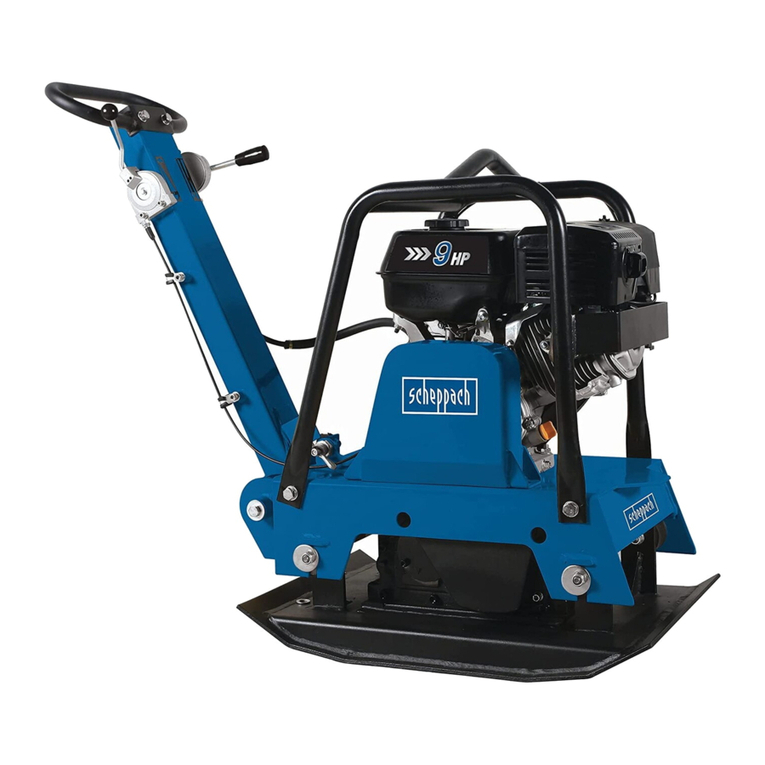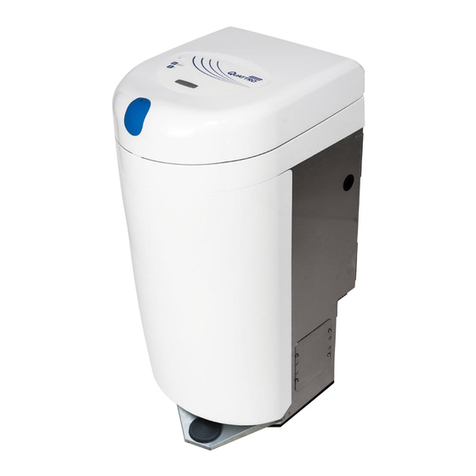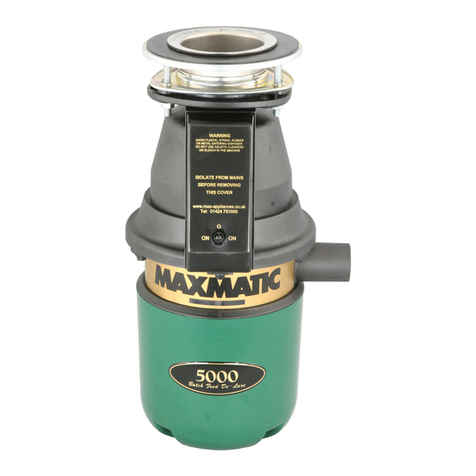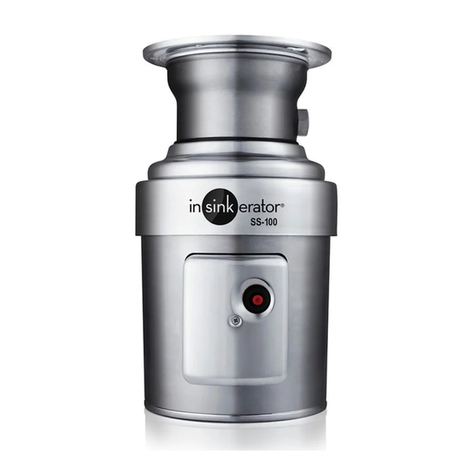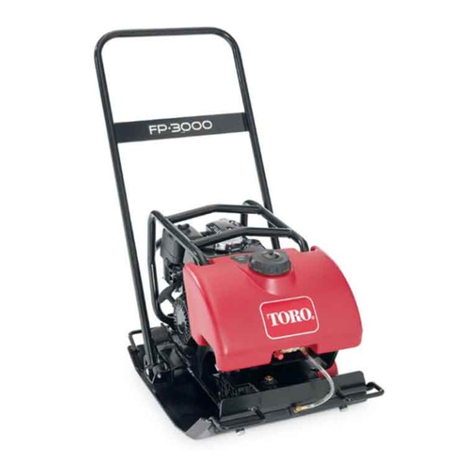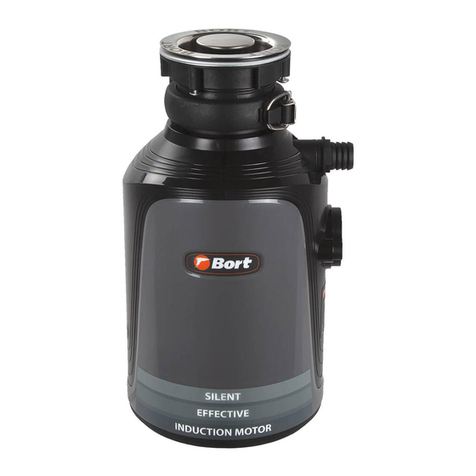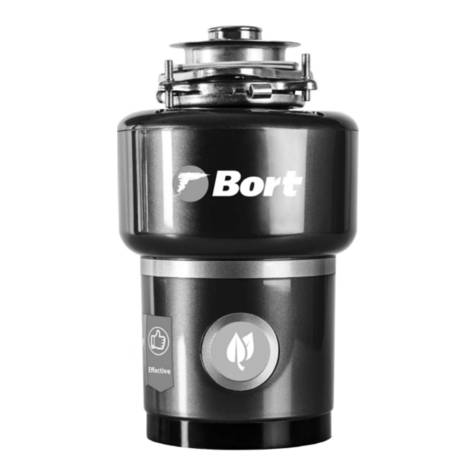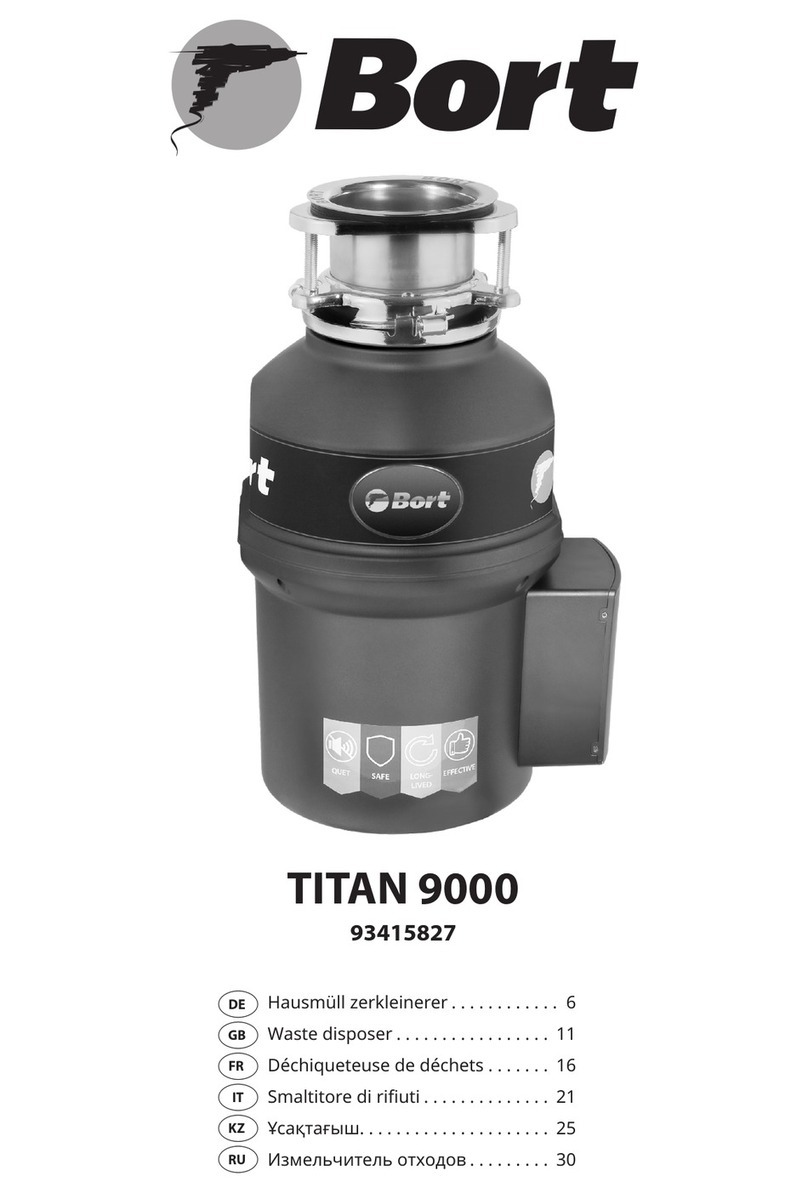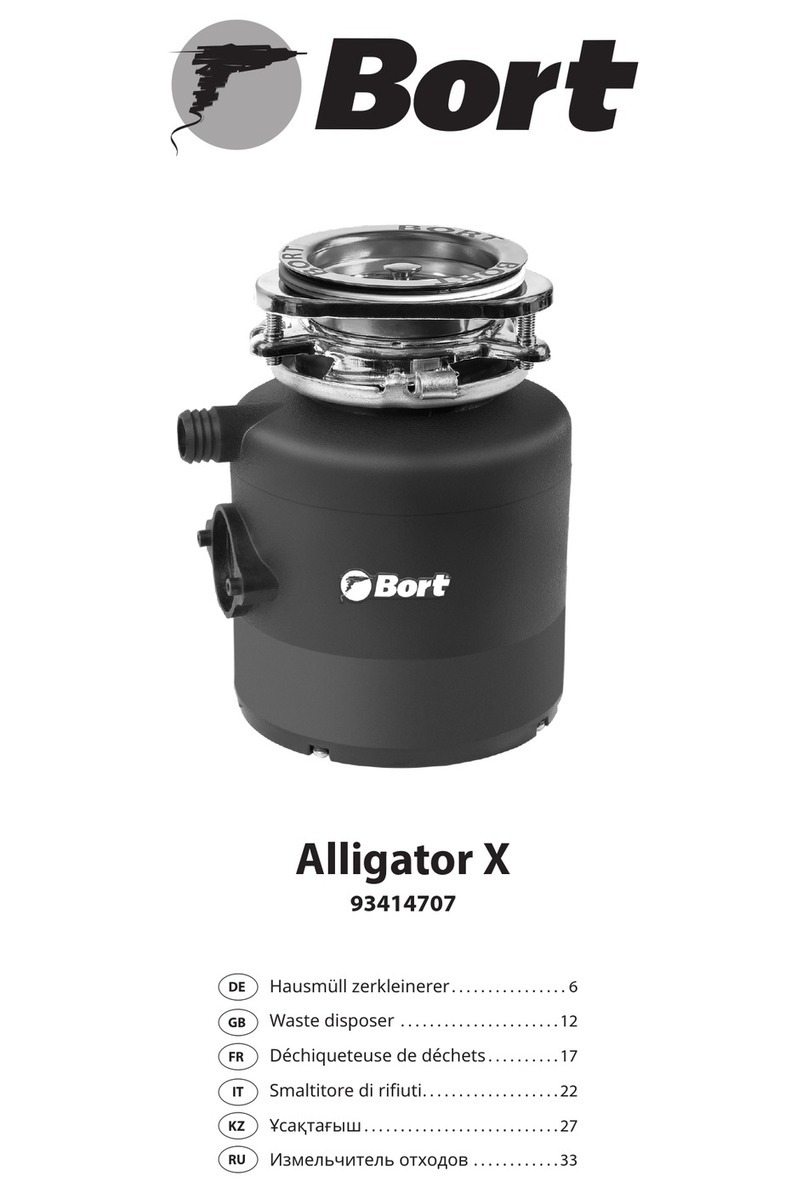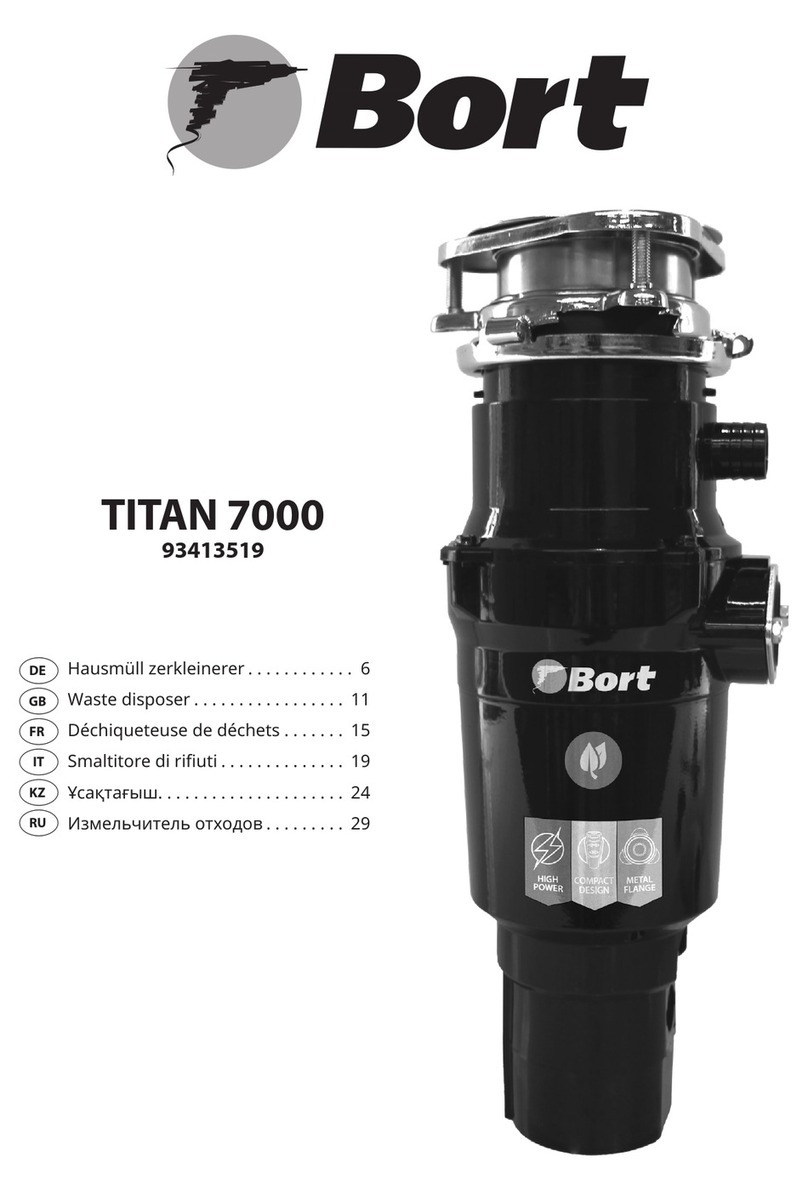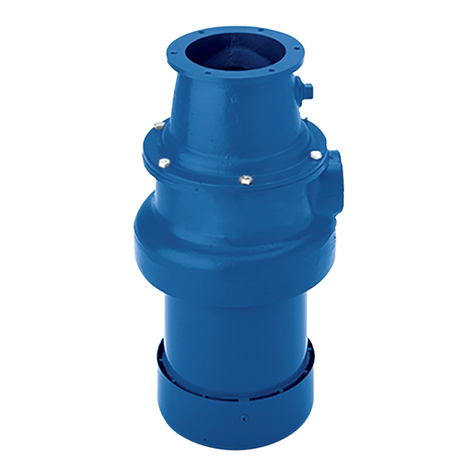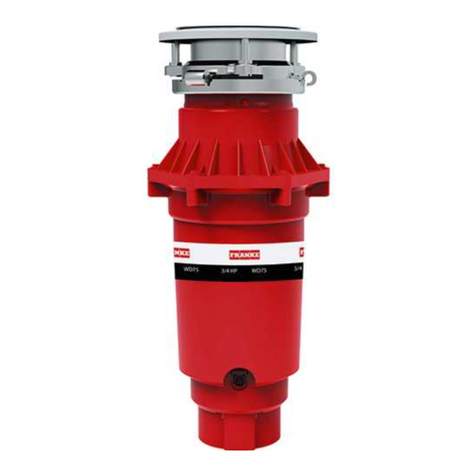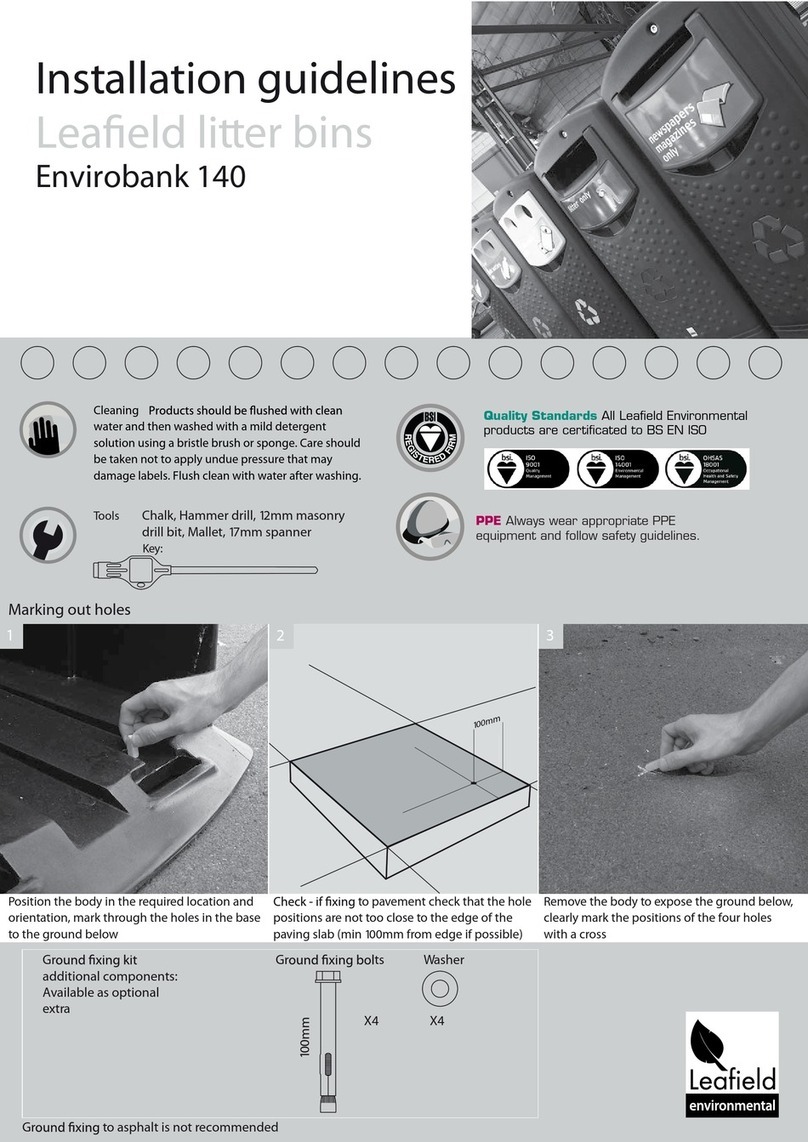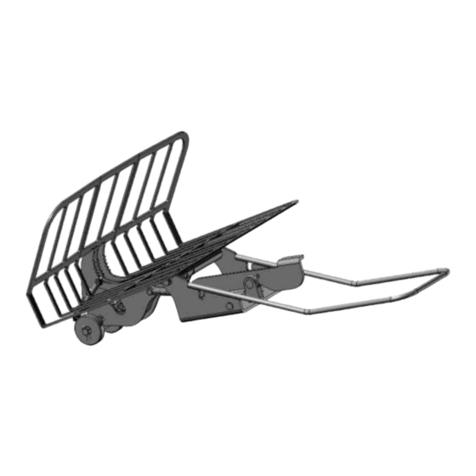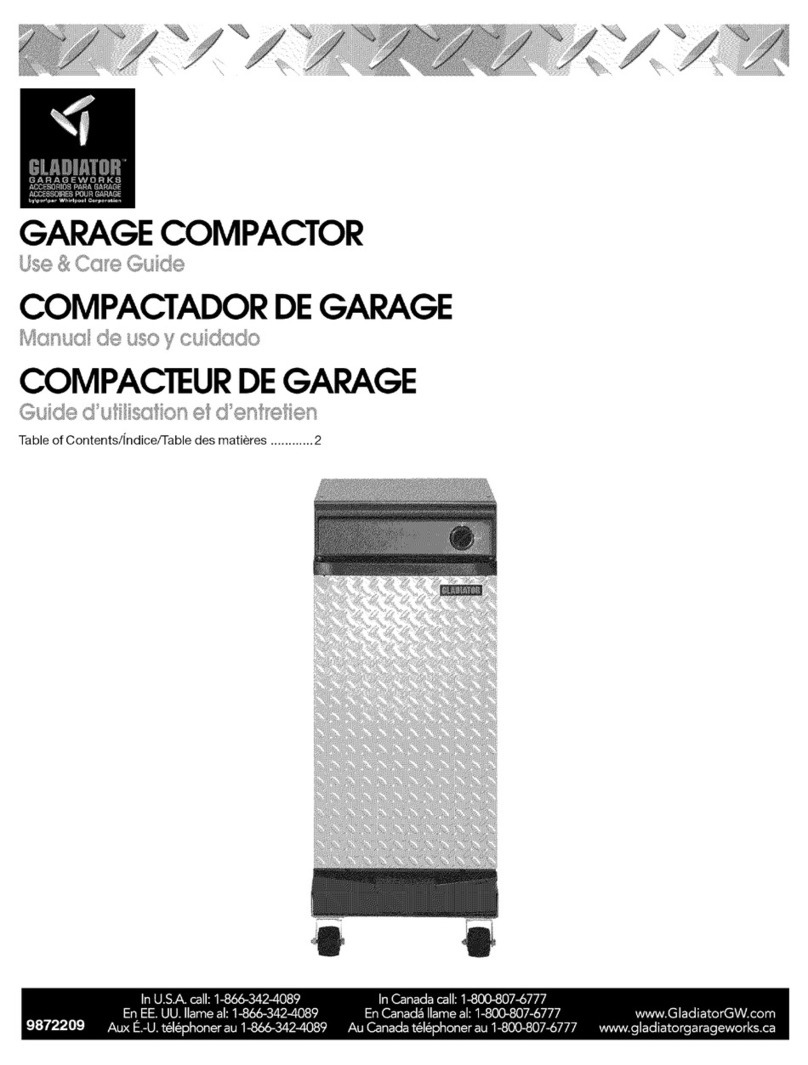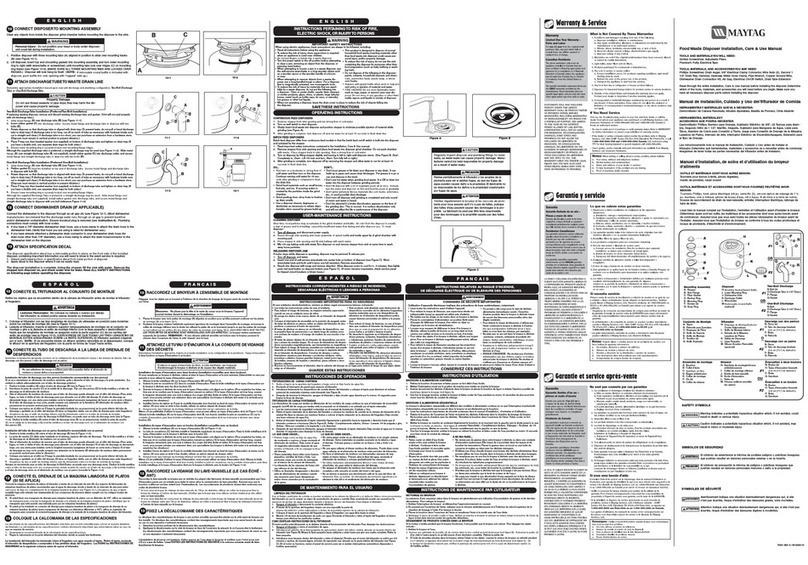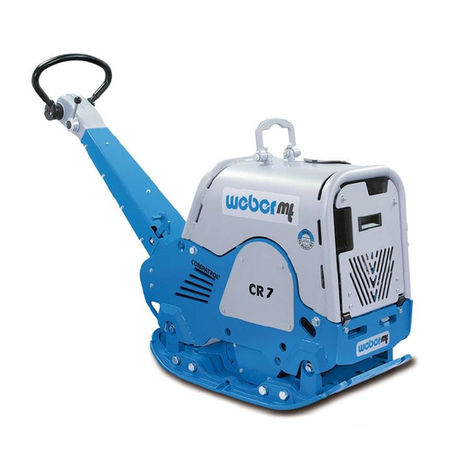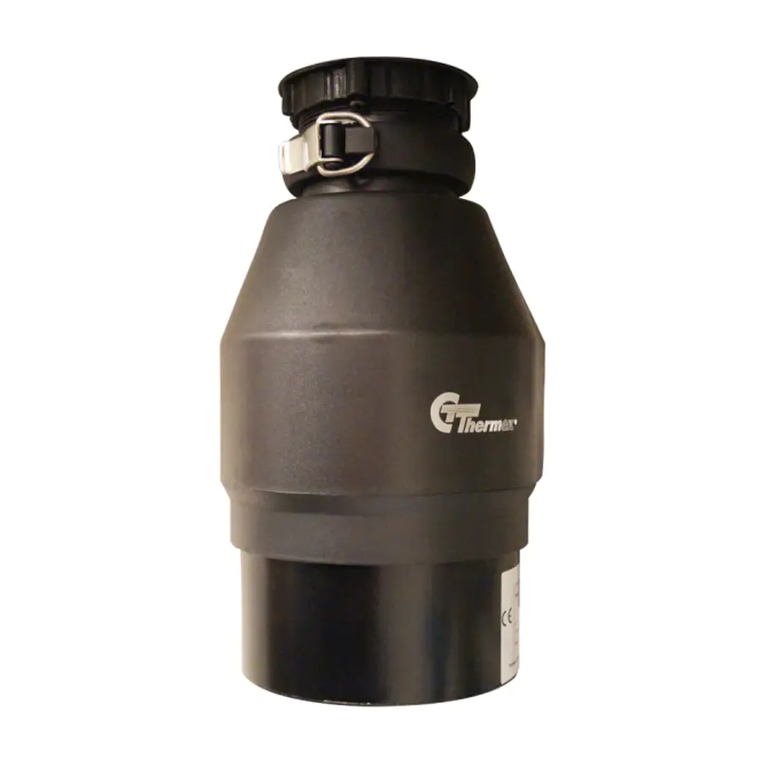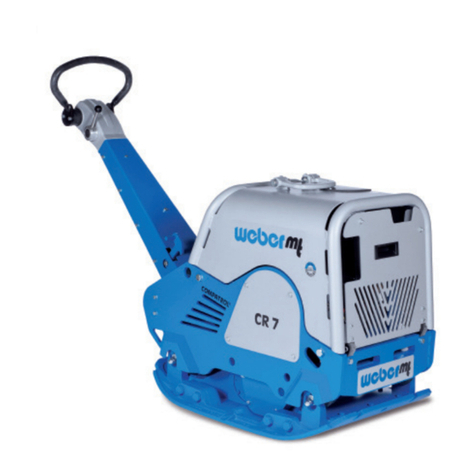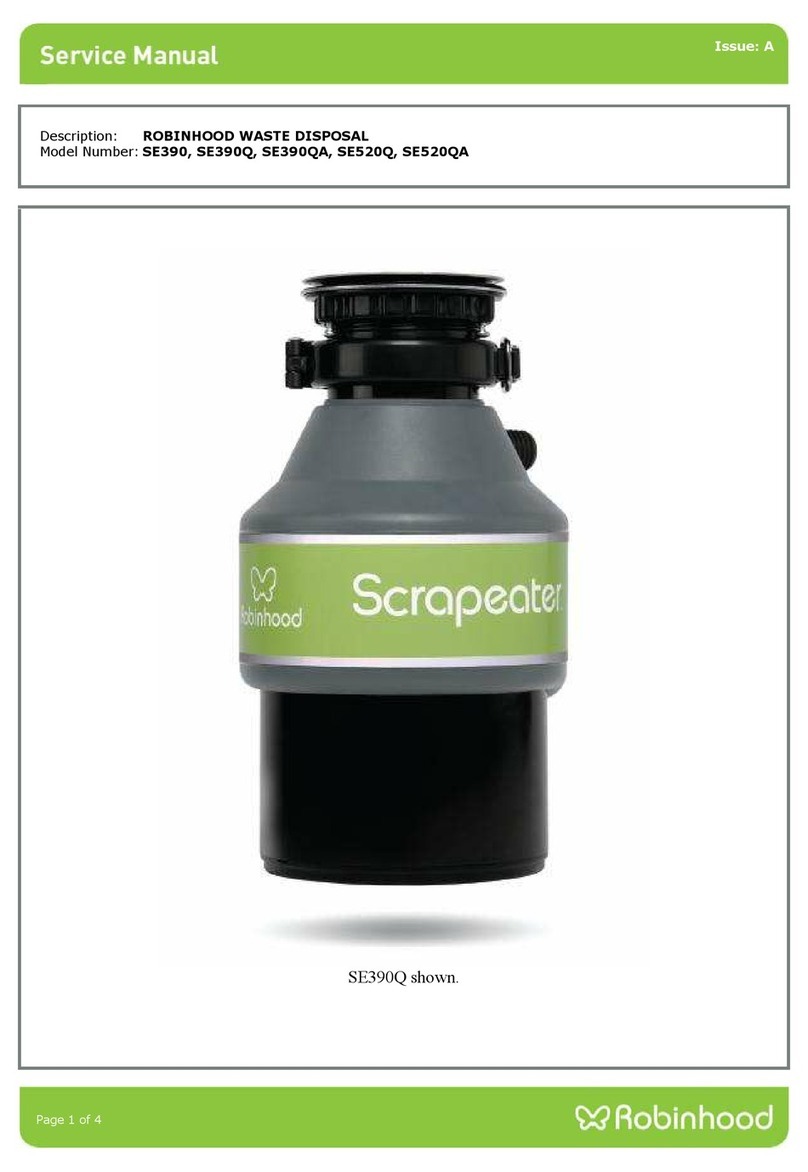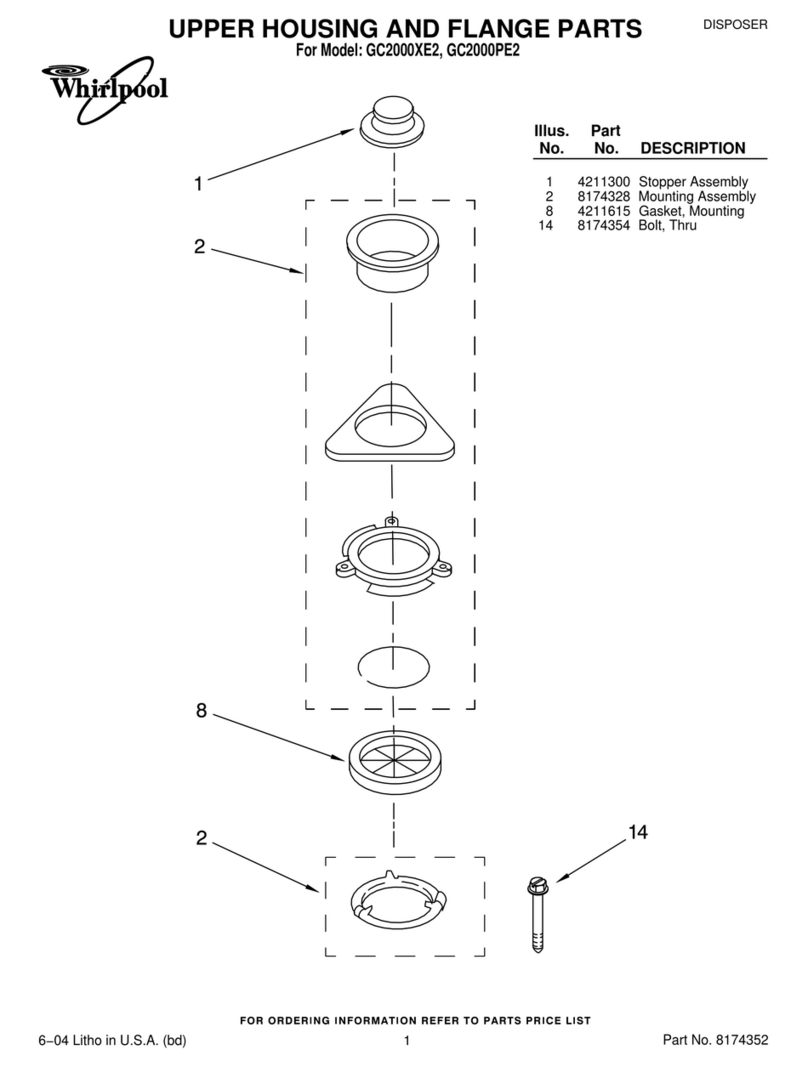
7
Dichtungsmittel ab. Entfernen Sie den Sicherungsring.
Im Voraus ist es besser
das Einsetzen der Dichtung
Position zu üben. Siehe den Abschnitt
«Dichtungsmerkmale».
3. Schrauben Sie den Stützring vom Ablaufflansch
ab und nehmen Sie die Papierunterlage ab. Jetzt
kann man den Ablaufflansch und Gummidichtung
entfernen.
4. Die Gummidichtung wird an dem Edelstahlausflüsse
statt des Dichtmittels verwendet. Auf den restlichen
Ausflüssen wird der Dichtungsmittel verwendet.
5. Wenn kein Dichtmittel verwendet wird, setzen Sie
den Abflussflansch ein
durch die Gummidichtung in die Ablauföffnung.
Drehen Sie den Abflussflansch nach dem Einbau nicht.
6. Bei Verwendung von Dichtmittel statt der
Einlage fertigen Sie einen Ring um den Boden des
Ablaufflansches (siehe 6).
Setzen Sie den Flansch in das Ablaufloch des
Spülbeckens ein und drücken Sie fest darauf nach
unten, um überschüssiges Dichtmittel auszudrücken
(siehe 6). Löschen Sie das überschüssige extrudierte
Material vom unteren Rand des Lochs.
7. Legen Sie die Pappauflage auf den Flansch, der
unter der Spüle ab Lochendflansch hervorsteht.
Schrauben Sie den Tragring auf den Flansch auf und
ziehen Sie ihn von Hand fest. Danach können Sie
den Zapfen in das Abflussloch einstecken und das
Wasser laufen lassen, um sicherzustellen, dass es keine
Leckage gibt.
8. Schieben Sie den Montagering auf den
Ablaufflansch auf. Stecken Sie die Dichtung so (breite
Seite nach unten) hinein, dass die Nut mit dem
Vorsprung am Ablaufflansch ausgerichtet wäre, wie ein
Deckel an der Kunststoffdose (siehe 7, 8 und 9). Lesen
Sie den Punkt„DICHTUNGSMERKMALE“.
9. Der Abfallentsorger wird so installiert, dass die
Rücksetztaste leicht zugänglich wäre.
DICHTUNGSMERKMALE
Wenn die Dichtung korrekt installiert ist, tritt die
Schulter des Ablaufflansches in die Aussparung
in der Dichtung ein und der Montagering kann
frei gedreht und nach unten entfernt werden. Die
Unterdichtungskante dient als Einlage zwischen der
Unterkante des Ablaufflansches und Oberkante des
Abfallentsorgers (Siehe Abb. 9).
ANSCHLUSS AN DAS ELEKTRISCHE NETZ
1. Hängen Sie den Abfallentsorger an den Strom.
ACHTUNG!: FEHLERHAFTE ERDVERBINDUNG KANN
ZUM STROMSCHLAG FÜHREN. EARTH CHECK MUSS
VON EINEM ERFAHRENEN ELEKTRIKER DURCHGEFÜHRT
WERDEN. DIE PRÜFUNG DER ERDVERBINDUNG MUSS
VON EINEM ERFAHRENEN ELEKTRIKER DURCHGEFÜHRT
WERDEN. WENN DER STECKER TRITT IN DIE STECKDOSE
NICHT, VERSUCHEN SIE IHN NICHT ZU ÄNDERN.
DIE BENÖTIGTE STECKDOSE MUSS VON EINEM
ERFAHRENEN ELEKTRIKER INSTALLIERT WERDEN.
2. Der Abfallentsorger muss geerdet sein. Bei
Fehlfunktionen oder Ausfällen erzeugt die Erdung
eine Leitung mit minimalem Widerstand für
elektrischen Strom, wodurch das Risiko eines
Stromschlags verringert wird. Dieser Chopper ist
mit einem Erdungsdraht und einem Erdungsstecker
ausgestattet. Der Stecker muss in eine geeignete
Steckdose eingesteckt werden, die gemäß den
geltenden Vorschriften und Normen geerdet ist. Wenn
das Netzkabel beschädigt ist, muss es von einem
erfahrenen Elektriker ersetzt werden.
ANBINDUNG DES ABFLUSSBOGENSTÜCKES
1. Befestigen Sie das Abflussbogenstück am
Abfallentsorger (siehe Abb. 10). Schließen den
Häcksler an den Abfluss an und befestigen Sie dann
den unteren Teil des Abflussbogenstückes durch
Anziehen der Gleitmutter (siehe Abb. 11).
2. Vergewissern Sie sich, dass die Leitungen dicht
angeschlossen sind.
ANSCHLIESSEN DES ABFALLENTSORGERS AN
DEN ABFLUSS
1. Richten Sie den Abfallentsorger unter dem Abfluss
aus. Führen Sie die Vorsprünge des Behälters in die
Aussparungen des Montagerings. Drehen Sie den
Befestigungsring um ca. 6 mm Recht für zeitweilige
Unterstützung des Geräts (siehe Abb. 12).
2. Drehen Sie den Befestigungsring und den
Abfallentsorger, bis der Zerhackerkrümmer gegenüber
dem Siphon sich postiert (siehe Abb. 13).
3. Drehen Sie den Befestigungsring nach rechts
(gegen den Uhrzeigersinn), bis er festgezogen ist.
Die Vorsprünge des Behälters müssen sich in den
Befestigungsschlitzen ganz links befinden, siehe Abb.
14 und 15).
4. Wenn der Montagering ist schwer zu drehen, kann
man etwas Vaseline oder Flüssigseife auf die Ränder
des Behälters geben. Lassen Sie Wasser laufen und
prüfen Sie die Dichtigkeiten.
GEBRAUCHSANLEITUNG
Beim Einschalten des Abfallentsorgers wird
möglicherweise ein Klicken gehört. Es zeigt die
normale Arbeitsposition der Nocken an.
1. Entfernen Sie den Stopfen aus dem Abfluss. Lassen
Sie kaltes Wasser laufen.
2. Drücken Sie den Schalter; der Motor läuft mit voller
